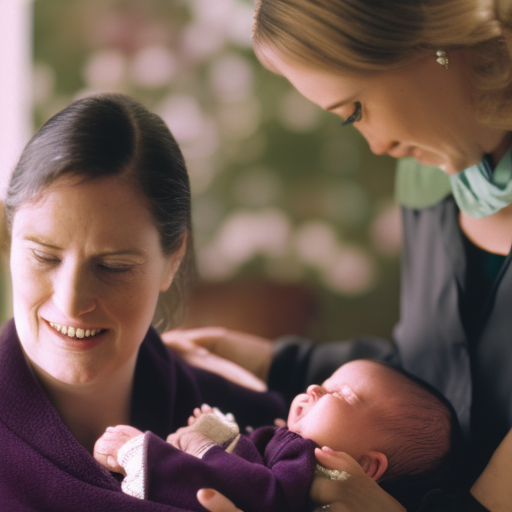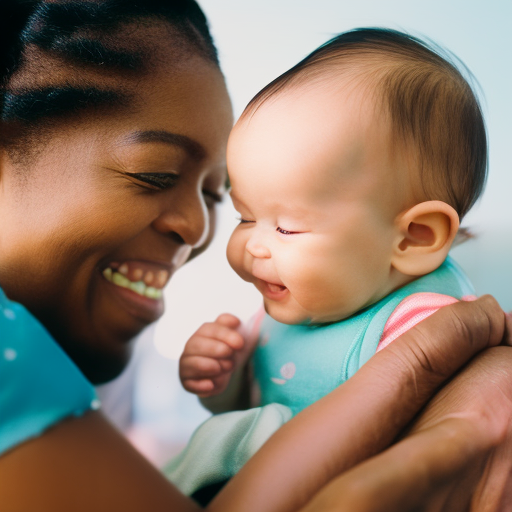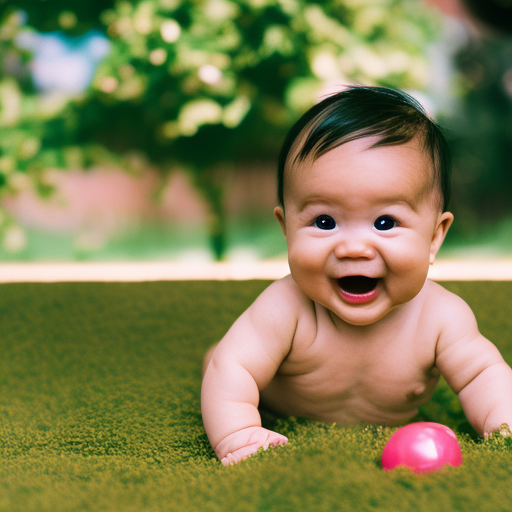"Cherishing Little Steps - A Haven for Baby and Family Journeys"
Understanding Infant Behavior
Understanding infant behavior can be both fascinating and challenging.
As a parent, you may find yourself constantly deciphering the signals and cues that your little one is sending your way. From their nonverbal communication to their crying patterns, sleep and wake patterns, feeding cues, and social interaction, infants have their unique ways of expressing their needs and emotions.
But how can you truly understand what your baby is trying to tell you?
Well, let’s explore the different aspects of infant behavior together and uncover the secrets behind their motor development, emotional expressions, and temperament.
Key Takeaways
- Infants rely on body language and facial expressions to communicate their needs and feelings.
- Caregivers play a crucial role in providing physical needs and emotional support for infants’ overall well-being.
- Crying can indicate hunger, discomfort, overstimulation, or sleepiness, and soothing techniques can help calm a crying baby.
- Understanding sleep and wake patterns, establishing a sleep routine, and paying attention to feeding cues contribute to a healthy infant’s development and well-being.
Infants’ Nonverbal Communication

When it comes to understanding infants’ nonverbal communication, it’s essential to observe their cues and gestures attentively. Infants rely heavily on their body language and facial expressions to communicate their needs and feelings. As a parent or caregiver, it’s crucial to be observant and attuned to these signals in order to provide the best care and support for your baby.
Infant body language can provide valuable insights into their well-being and emotional state. For example, when a baby is content and relaxed, they may display relaxed muscles, open hands, and a peaceful facial expression. On the other hand, when a baby is feeling uncomfortable or distressed, they may exhibit clenched fists, furrowed brows, or a tense body posture.
Facial expressions are another important aspect of infants’ nonverbal communication. Babies have a wide range of facial expressions that reflect their emotions, such as joy, sadness, surprise, or frustration. A smiling baby, with bright eyes and a wide grin, is often a sign of happiness and contentment. Conversely, a frowning baby with a wrinkled forehead may indicate discomfort or unhappiness.
Understanding Crying Patterns

Have you ever wondered why infants cry and what their crying patterns mean? Understanding why your baby cries can be a challenging task, but it’s essential for their well-being and your sanity. Here are some insights into crying patterns that may help you decode your little one’s needs:
-
Hunger: One of the most common reasons for crying is hunger. Pay attention to the timing of your baby’s cries, especially if it occurs shortly after a feeding.
-
Discomfort: Infants cry when they’re uncomfortable, such as when they’ve a wet diaper, are too hot or cold, or have an itchy rash. Check for any physical discomfort that might be triggering their cries.
-
Overstimulation: Babies have limited sensory processing capabilities, and too much noise, light, or activity can overwhelm them. Creating a calm and soothing environment can help alleviate their distress.
-
Sleepiness: Just like adults, babies get tired too. When they’re exhausted, they may cry as a way of expressing their need for rest.
To soothe your crying baby, try these techniques:
-
Comforting touch: Gently rocking or holding your baby close can provide a sense of security and calm.
-
Soft sounds: Singing a lullaby or playing soothing music can help distract and relax your little one.
-
Swaddling: Wrapping your baby snugly in a blanket can recreate the feeling of being in the womb and provide a sense of comfort.
-
Pacifier: Offering a pacifier can help satisfy your baby’s need to suck and provide a soothing effect.
Sleep and Wake Patterns

Understanding your baby’s sleep and wake patterns is crucial for establishing a healthy sleep routine and ensuring they get the rest they need. Sleep training and nap schedules play an important role in achieving this goal. As a parent, you may find yourself wondering why your little one doesn’t sleep through the night or struggles with daytime naps. Rest assured, you aren’t alone in this journey.
Babies have different sleep needs and patterns compared to adults. They cycle through periods of light sleep and deep sleep, often waking up briefly between these cycles. This is completely normal and helps them adjust their sleep patterns as they grow. By understanding these patterns, you can create a sleep routine that promotes better sleep for your baby and yourself.
Sleep training involves teaching your baby to fall asleep independently and self-soothe when they wake up during the night. This process takes time and consistency, but it can help your baby develop healthy sleep habits. Establishing a consistent nap schedule is also essential for your baby’s overall sleep routine. Consistent nap times can help regulate their internal body clock and make it easier for them to fall asleep and stay asleep at night.
Feeding Cues and Hunger Signs

As you navigate your baby’s sleep and wake patterns, it’s important to pay attention to their feeding cues and hunger signs. Understanding these signs can help you establish a feeding schedule that meets your baby’s needs and supports their healthy development. Here are some key things to look out for:
-
Rooting reflex: When your baby turns their head and opens their mouth in search of food, it’s a clear indication that they’re hungry and ready to feed. This reflex usually disappears around 4 months of age.
-
Sucking on hands or objects: If your baby starts sucking on their fingers, fists, or toys, it could be a sign of hunger. This is their way of trying to satisfy their hunger until they can be fed.
-
Increased alertness and activity: When your baby becomes more alert and active, it may indicate that they’re hungry. They might start squirming, kicking their legs, or making little noises to get your attention.
-
Introducing solid foods: As your baby grows, you may begin to introduce solid foods alongside their milk or formula. Look for signs of readiness, such as sitting up with support, showing interest in your food, and being able to swallow properly.
Social Interaction and Attachment

Babies are born with an innate need for social interaction and attachment, seeking connection and closeness with their caregivers. This need forms the foundation for secure attachment and lays the groundwork for healthy social and emotional development. From the moment they enter the world, infants are wired to seek the comforting presence of their caregivers. They rely on their caregivers to provide not only their physical needs but also the emotional support and nurturing that’s essential for their overall well-being. Through social bonding, babies learn to trust, form relationships, and develop a sense of security in the world around them.
Secure attachment is a vital component of a baby’s early experiences and has long-lasting effects on their future relationships and overall happiness. It’s through the reciprocal interactions with their caregivers that infants learn to regulate their emotions, develop empathy, and form a sense of self. These early interactions shape the infant’s understanding of themselves and others, laying the groundwork for future social connections and relationships.
As a caregiver, it’s essential to respond sensitively and consistently to your baby’s cues for social interaction and attachment. By providing a warm and nurturing environment, you create a secure base from which your baby can explore the world and develop important social and emotional skills. Remember, your presence and responsiveness are the building blocks for your baby’s social and emotional development, fostering a deep and lasting bond between you and your child.
Motor Development and Body Language

You can gain valuable insights into your baby’s development by observing their motor skills and body language. Paying attention to how they move and interact with their environment can provide a wealth of information about their physical and cognitive growth.
Here are some key points to help you better understand your baby’s motor development and body language:
-
Fine motor skills and hand-eye coordination: Watch how your baby grasps objects, such as toys or their own fingers. Notice if they can bring their hands together or reach for objects with precision. These actions indicate the development of their fine motor skills and hand-eye coordination.
-
Gross motor skills and physical milestones: Observe your baby’s ability to roll over, crawl, sit up, and eventually walk. Each of these milestones signifies the progression of their gross motor skills and overall physical development.
-
Body language cues: Pay attention to your baby’s facial expressions, gestures, and body movements. These nonverbal cues can provide valuable insights into their emotions, needs, and level of comfort.
-
Individual differences: Remember that each baby develops at their own pace. While there are general guidelines, it’s important to focus on your baby’s unique progress and not compare them to others.
Emotional Expressions and Temperament

Understanding your baby’s emotional expressions and temperament can provide valuable insights into their inner world and how they navigate their environment. Temperament refers to the individual differences in how babies react to and interact with their surroundings. It influences their personality development and lays the foundation for their emotional well-being.
Here is a table that highlights the different aspects of emotional expressions and temperament:
| Aspects of Emotional Expressions and Temperament | Description |
|---|---|
| Reactivity | Refers to how your baby responds to stimuli, such as loud noises or new experiences. Some babies may be more reactive and easily overwhelmed, while others may be more calm and easygoing. |
| Adaptability | Reflects how well your baby can adjust to changes in their environment. Some babies may struggle with transitions, while others may adapt easily. |
| Intensity | Describes the energy level of your baby’s emotional responses. Some babies may have intense reactions, while others may be more laid-back. |
| Persistence | Refers to how long your baby stays engaged in an activity or task. Some babies may have a high level of persistence, while others may quickly lose interest. |
Understanding your baby’s temperament can help you tailor your approach to their needs and support their emotional regulation and self-soothing techniques. For example, if your baby tends to be more reactive, you may need to create a calm and soothing environment for them. If they have a high level of persistence, you can provide them with activities that allow them to explore and engage for longer periods.
Frequently Asked Questions
How Can I Help My Baby Develop Their Motor Skills?
You can help your baby develop their motor skills by providing sensory stimulation and engaging in baby-led play. By incorporating activities that encourage movement and exploration, you can support their physical development and encourage their curiosity.
What Are Some Common Signs of Hunger in Infants?
When your baby is hungry, they may start rooting around or smacking their lips. They might also become more fussy or cry. These are common signs of hunger that you can look out for.
How Can I Establish a Bedtime Routine for My Baby?
To establish a bedtime routine for your baby, start by creating a consistent schedule. Make sure to incorporate calming activities like a warm bath or reading a story. Consistency is key for a peaceful sleep routine.
What Are Some Effective Techniques for Soothing a Fussy Baby?
When your baby is fussy, try these effective techniques for soothing them. Understanding their sleep patterns can help. Remember, you are the expert on your baby, so trust your instincts and find what works best for both of you.
How Can I Encourage Social Interaction and Attachment With My Baby?
To encourage social interaction and attachment with your baby, spend quality time together. Engage in eye contact, gentle touch, and responsive communication. These actions promote emotional bonding and cognitive development, setting the foundation for a strong parent-child relationship.
Conclusion
So there you have it, dear reader. After delving into the intricate world of infant behavior, you now possess a wealth of knowledge.
It’s truly fascinating how these tiny beings communicate through their cries, sleep patterns, and even their body language. You’ve become an expert in decoding their hunger cues and understanding their emotional expressions.
Now, armed with this newfound understanding, you’ll never look at a crying baby the same way again. Oh, the joys of parenthood!


